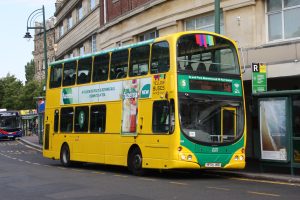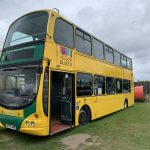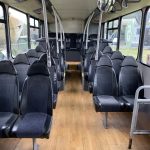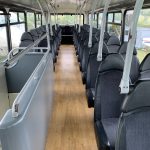Technical Data
Length: 10.6m
Height:
Max Speed:
Max Weight:
Seating Capacity: 76
Engines: 7.3 litre Volvo diesel
Our Volvo bus
HF04JWD was one of 24 Volvo B7TL’s supplied to Bournemouth’s Yellow Buses in 2004 with fleet number 183. Fitted with Wright Eclipse Gemini bodywork, it was equipped for 76 passengers, with the fleet frequently used on the Poole to Somerford service. Bournemouth Transport Ltd went through a number of owners, ending with a management buyout in July 2019, following which the Volvo was given a new fleet number 5009. The Museum acquired the bus in August 2022 following Bournemouth Transport going into administration at the beginning the month. It replaced our earlier Leyland Fleetline bus which had always proved a major attraction at the Museum – despite it being an Aviation Museum! Here is the bus arriving at the museum in October 2022 under it’s own power!
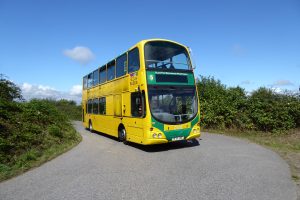
Type History
Modern day buses come in two parts – chassis and bodywork. The B7TL’s chassis was designed by Leyland Bus in the late 1990s, then becoming part of Volvo Bus. Initially built at Irvine, Scotland, production switched to Volvo’s factory at Gothenburg, Sweden in 2000, continuing until 2007. Power was from a rear mounted 7.3 litre Volvo D7C diesel engine. The chassis could be fitted by bodywork produced by a number of companies. HF04JWD was fitted with a Wright Eclipse Gemini bodywork produced by Wrightbus at their factory in Ballymena, Northern Ireland. Half of Bournemouth’s fleet of B7TLs had Wrightbus bodywork, the other half had East Lancs Vyking or Myllennium bodywork. Production of the B7TL for bus companies in the United Kingdom was around 2,750, with others exported to Ireland and South Africa. Major UK users included First Group and Transport for London. Here is the bus in service picking up passengers at Gervis Square, Bournemouth.
